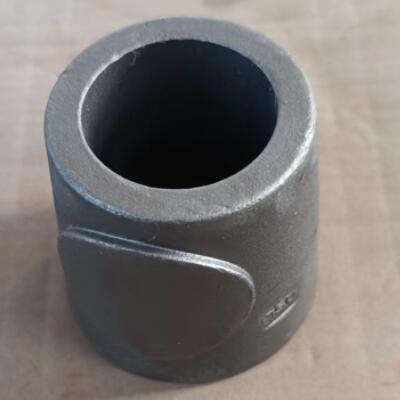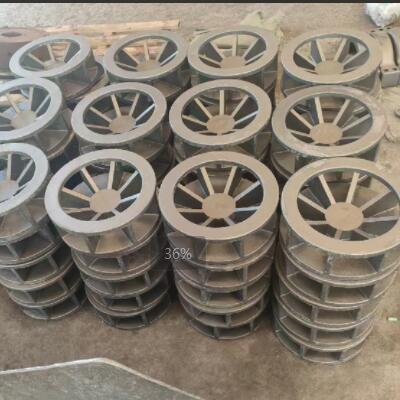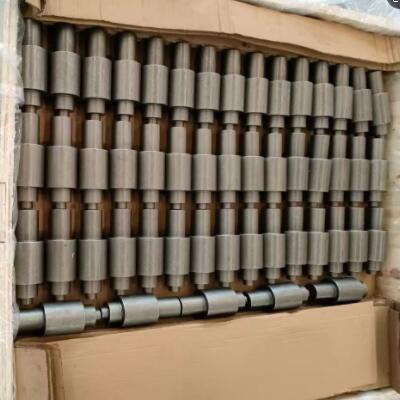What is Water Glass Casting?
Water glass casting is also known as sodium silicate casting. It is a kind of lost wax casting parts manufactured based on water glass technology. Water glass is a colorless and transparent colloidal substance. It can form a strong chemical bond with metallic materials. Water glass castings are usually used to manufacture mechanical parts, automotive parts, aviation parts.

4140 alloy water glass casting 
water glass impeller 
water glass shaft
JC Casting is a Water Glass Casting Manufacturer in China. We have Water Glass Casting foundry with different machining workshop. Compared with Silica Sol Casting, Water Glass Casting has competitive price advantage. If you have any casting inquiries, contact us!
Water Glass Casting Benefits
Water glass castings have the following advantages:
1. Lower cost:
- 1. Raw material costs: water glass as a binder, inexpensive, can reduce casting costs.
- 2. Equipment and process costs: water glass casting process is simple. The requirements for equipment are not high. Do not need complex and expensive equipment investment.
2. High production efficiency:
- 1. Fast molding speed: water glass can be hardened and dried in a short period of time. Speeding up the production speed of casting.
- 2. Suitable for mass production: able to produce a large number of castings in a short period of time to meet the market demand for high-volume castings.
3. Good casting performance:
- 1. Good mobility: water glass and refractory materials mixed to form a coating with good mobility. It can be uniformly covered on the surface of the model. To ensure that all parts of the casting can be fully filled. Thus improving the molding quality of the castings.
- 2. High thermal stability: at high temperatures, water glass can maintain good stability. Not easy to decompose or deteriorate and other phenomena.
4. More materials cast.
- Such as cast iron, cast steel, alloy steel and so on. Higher dimensional accuracy of castings: through reasonable process control and mold design, water glass castings can achieve higher dimensional accuracy. Although compared with some high-precision casting process (such as silica sol casting) there may be a certain gap. But for castings that do not require particularly high dimensional accuracy. Water glass casting can meet its accuracy requirements.
5. Good environmental protection
- Water glass is a relatively environmentally friendly binder. In the use of the process of environmental pollution is small.
Water Glass Casting The Process and step
Step 1: Injection of Wax
After the creation of the casting’s wax pattern, the molten wax is injected into a mold to produce a wax pattern of the casting. Molds made of Aluminum and sized to accommodate shrinkage in the wax and metal being used. Wax tooling may range from simple two-piece dies to multi-cavity automated dies with water-soluble or ceramic cores.
Step2: Assembly of Wax
The wax patterns are attached to a sprue or tree once they’ve cooled and solidified. The sprue is also composed of wax. It has all the required gates, runners, and supports to feed the component during casting.
Step 3: Making of Shell
The wax sprue has now been “invested” in ceramics, making the mold for metal to be pouring into. The ceramic comprises of two parts: a liquid slurry topped by a dry sand bed. Each sprue is covering many layer of slurry and sand until the ceramic shell is strong enough for the casting process. It takes between two days and two weeks for shells to dry, depending on how they form.
Step 4: Removal of Wax
It is important to melt the wax by immersing it in autoclave to counteract the wax expansion. The ceramics are then fired to remove any remaining wax residue and cure the ceramic shell. The shells are ready for casting once it’s fired.
Step 5: Pouring
Before casting, the shells are pre-heated in the oven. After removing the shells out of the oven, and preparing molten metal, the shells are then removed, and the metal is poured into them.
Step 6: Finishing
To release the casting, the shell may go through hammering. The sprue is then removed and recycled. Finally, remove any evidence of the manufacturing process by cleaning casting.
Water Glass Casting Application
Water Glass Casting is usually used on low-alloy steel, carbon steel, and stainless steel components. It is also used on those with a large casting. Steel castings from 0.05 to 80 kilograms are possible using investment casting with glass. Its application can be found mos in the production of trailers, farming equipment, and the offshore sector.
Water glass casting parts have a wide range of applications, mainly including the following aspects:
Mechanical manufacturing field:
- Parts production: such as gears, sprockets, bearing housings, boxes.
- Mold manufacturing: used for manufacturing plastic molds, rubber molds, die-casting molds.
Automobile manufacturing industry:
- Engine parts: cylinder block, cylinder head, crankshaft, camshaft, etc.
- Automobile chassis parts: automobile chassis suspension system, steering system, braking system, etc.
Construction industry
- Architectural decorative parts: such as railings, handrails, sculptures, decorations.
- Building components: such as prefabricated beams, prefabricated columns, prefabricated panels.
Energy field:
- Wind power generation equipment: wind power generation equipment blades, hubs, nacelles
- Hydroelectric power generation equipment: hydraulic turbine blades, runners, guide vanes
Water Glass Casting Foundry / Factory
Looking for a Professional Customized Casting Manufacturer? Then you’re in the right place. We, at JC Casting, have been using this method for many years. We are one of the finest investment casting foundries in water glass castings. We make sure that we provide excellent results with better designs and high-quality castings. Contact us now: info@jccasting.com
